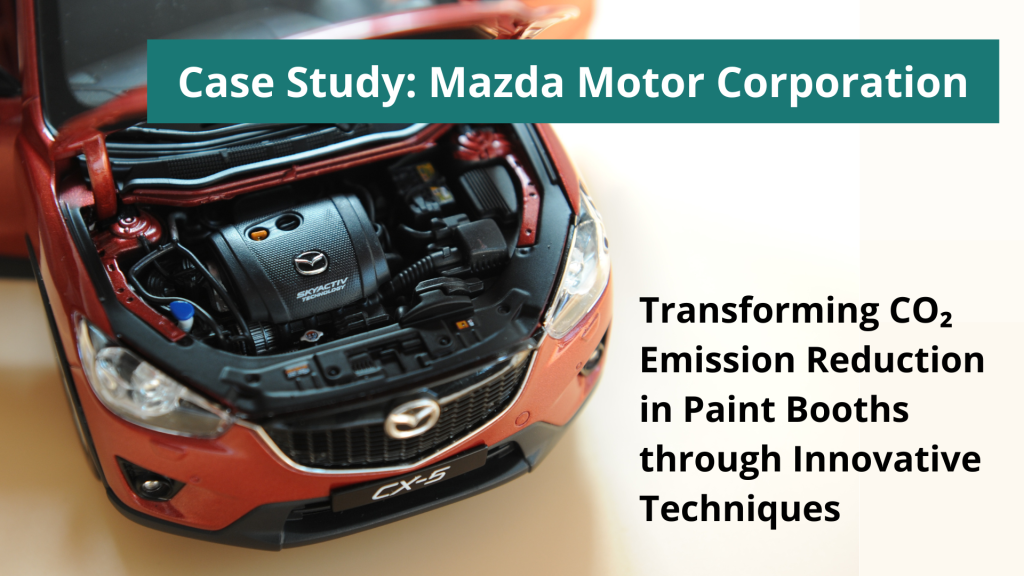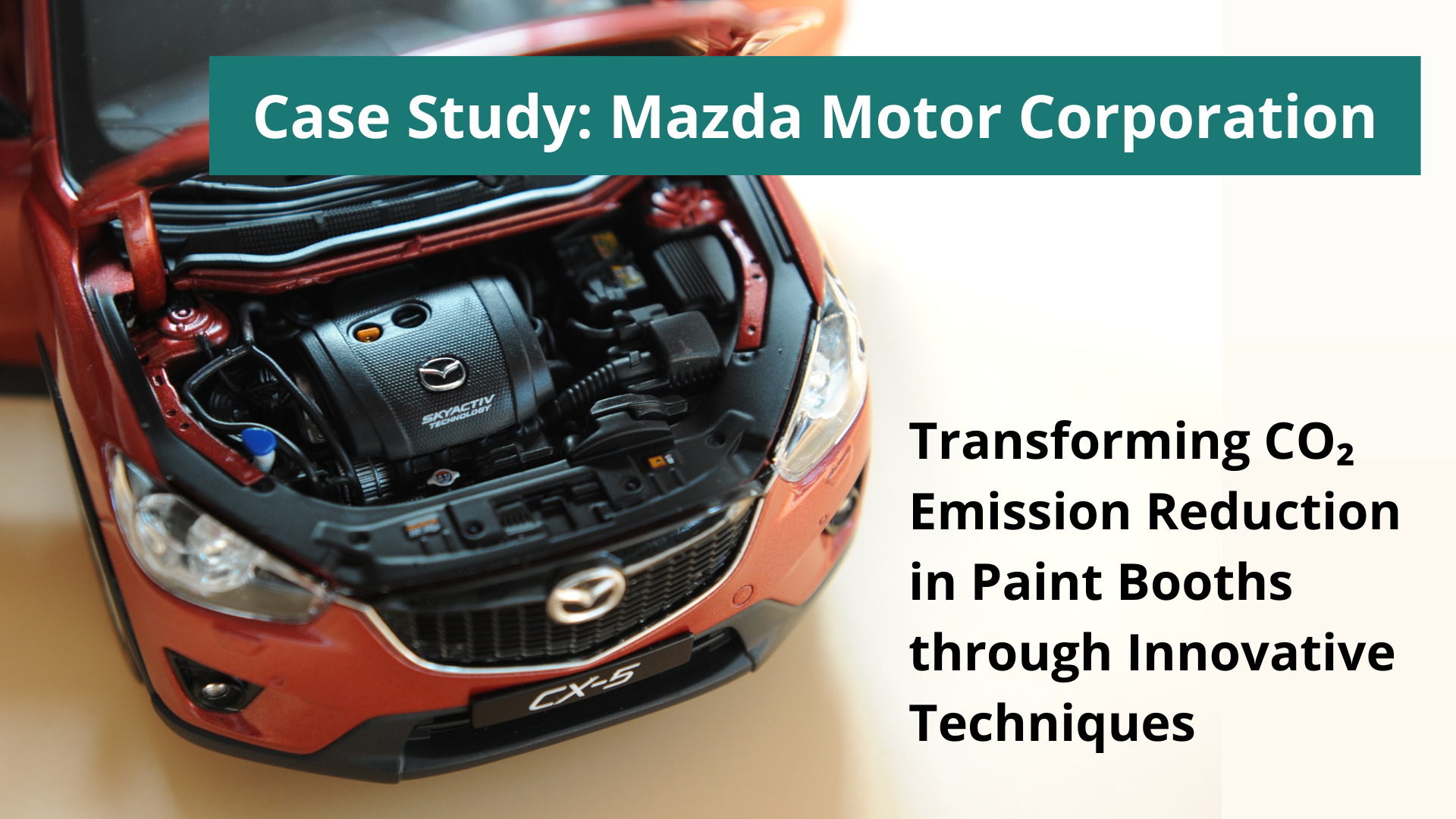
As the automotive industry continues its journey towards environmental sustainability, Mazda has taken proactive measures to reduce CO₂ emissions in their paint booth operations. Through the development of an advanced monitoring system and a shift from oil-based to water-based paints, Mazda has successfully achieved a 15% reduction in CO₂ emissions.
Case Study: Mazda Motor Corporation
Best Environmental Management Practice
Mazda has pioneered a ground-breaking system that continuously monitors the maximum water vapour absorption volume, allowing for precise adjustments to temperature and humidity levels within the paint booth. This optimisation of factors enables Mazda to minimise energy consumption while efficiently removing water from the paint. Consequently, there is no longer a need for temperature fluctuations during the drying process, a departure from the conventional system where temperature is raised to 80°C for sufficient drying and then reduced to 40°C before applying the clear coat. These changes have allowed for water to be efficiently removed using the lowest possible energy usage.
Environmental Aspects Affected
The implementation of Mazda’s innovative system and the adoption of water-based paints have yielded significant environmental benefits. By eliminating the need for temperature adjustments and reducing energy consumption, Mazda has achieved reduction in CO₂ emissions. This streamlined process has also reduced the overall energy demand of the paint booth operations, resulting in a more sustainable and environmentally friendly manufacturing process.
Rationale / Economics
Mazda’s development and implementation of this advanced monitoring system shows their commitment to environmental stewardship. By actively seeking ways to minimise their carbon footprint, Mazda showcases their dedication to sustainable practices within the automotive industry. Moreover, this innovative approach brings economic advantages. The reduction in energy consumption and improved efficiency translate into cost savings for the company, contributing to long-term profitability and competitiveness.
Mazda’s commitment to environmental sustainability is exemplified through their innovative CO₂ reduction practices in paint booth operations. By implementing a monitoring system that optimises temperature and humidity levels, combined with the transition from oil-based paints to water-based paints, Mazda has achieved a significant 15% reduction in CO₂ emissions. This best environmental management practice showcases Mazda’s environmental responsibility and also underscores the economic benefits of embracing sustainable solutions. Mazda’s pioneering approach serves as an inspiration for the automotive industry, encouraging other manufacturers to embrace innovative practices for a greener future.
Download Free Guide on Best Environemntal Management practices in Fabricated Metal Product Manufacturing Industry that will help you to save on costs and be more eco-friendly.
If you would like to achieve benefits and integrate your business processes with the best environmental practices through the implementation of the Environmental Management System according to ISO 14001 – visit www.iso14001in14weeks.co.uk – I will be happy to help!

Ph.D. Beata Paliwoda
Founder and Owner of EQM. Environmental and quality consultant and auditor. Professional career built in Quality Assurance departments in various companies from the automotive, aerospace, railway industries, as well as a management systems consultant. Successfully completed many complex projects related to the implementation of management systems, process improvements and business transformation. Auditor of ISO 9001, ISO 14001, AS 9100, project manager of APM, lecturer at the Poznan University of Business and Economics, researcher on the effectiveness of EMS and QMS in organisations.
Sources
- European Commission, Best Environmental Management Practices for Fabricated Metal Product Manufacturing, EUR 30025 EN, 2020, doi:10.2760/894966
- Mazda Motor Corporation implemented the system for vehicle body painting at its Ujina Plant No.1, in Japan, http://www.mazda.com/
Disclaimer
The purpose of this blog post is to promote best environmental management practices and showcase a real-life example of sustainable initiatives. The information provided is based on available sources and is intended for general informational purposes only. The author does not assume any liability for the actions or decisions made by other organisations or individuals based on the content of this blog post. The author also does not claim to have been directly involved in the implementation of the described practices within the specific company mentioned.






